Why would you want a cat enclosure?
- To keep your cat safe whilst giving them added freedom to exercise and enjoy the outdoors.
- Many cats go missing or are injured by passing cars, and a cat enclosure will prevent this.
- To allow your cat to spend time outside at night in an area where roaming cats are frowned upon (i.e. most of Australia)
- A cat enclosure will keep your cat safe from territorial encounters, infectious diseases, toxic substances, and dangerous wildlife.
- Because of the above hazards, it’s generally accepted cats kept indoors or in an enclosure can live much longer than a free-roaming outdoor cat.
I didn’t know my cat was urinating in my neighbour’s vegetable garden until my neighbour furiously banged on my door one evening at 7 o’clock.
I forget most of the words which came out of his mouth that evening, but I’ll never forget how he shook in anger.
He wasn’t much of a cat person.
One thing he did say though, was all cats should be kept inside at night by law, showed me his watch, then pointed at my cat basking in the evening sun.
When I grew up in England, cats roamed the streets, and nobody cared. In Australia, however, many people see them as feral evil pests who have invaded the beautiful land to fulfil their alien plots to conquer Earth.
Feral cats truly are problematic “pests” in rural Australia. They’re natural predators, and can disrupt the delicate balance of native wildlife. This can be detrimental to Australian biodiversity.
But even in inner city Perth, Adelaide, Melbourne, Brisbane, and Sydney, many people view cats as pests.
As cat lovers, we also want to protect are pets from the dangers of city living, from fast cars, dangerous wildlife, and even from theft.
These are reasons cat enclosures can be a great idea, but what style or size is right for you, your home, and most importantly, your cat?
Different types of cat enclosure
To give you cat enclosures for thought, below are what other cat owners have done. These should really inspire you, and give you a good idea on what you can do based on your style of home and outdoor area.
Patio, Deck, or Verandah Cat Enclosures
Sometimes the simplest cat enclosure can be built around your patio, deck, or verandah. The benefit of this is you already have the roof and likely 4 corners – pillars or wall – to attach netting to.
Enclosing a verandah on an older style Australian house is a great way for the whole family to enjoy the outdoors and interact together.
No more waiting at the door for you to open it.
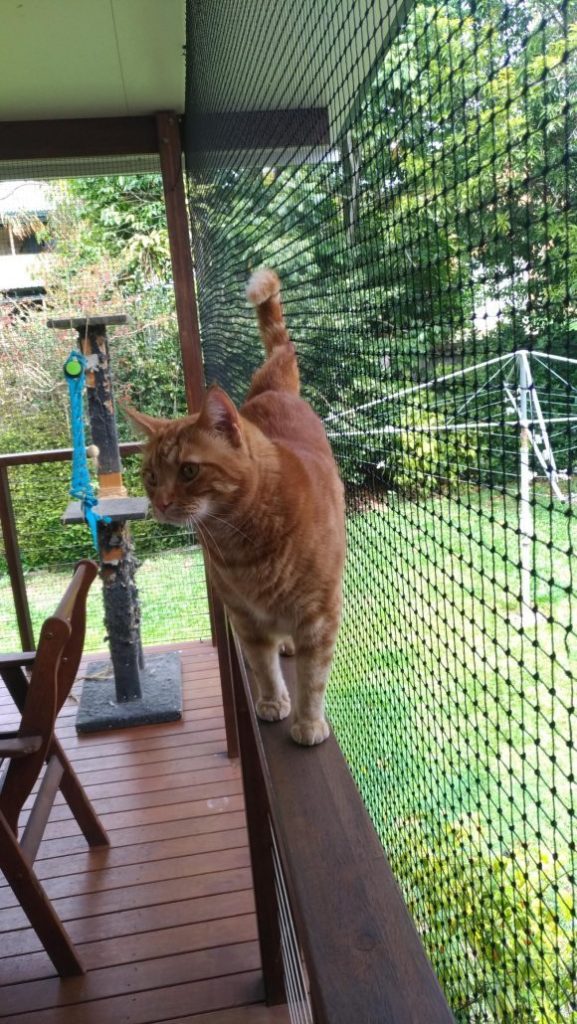
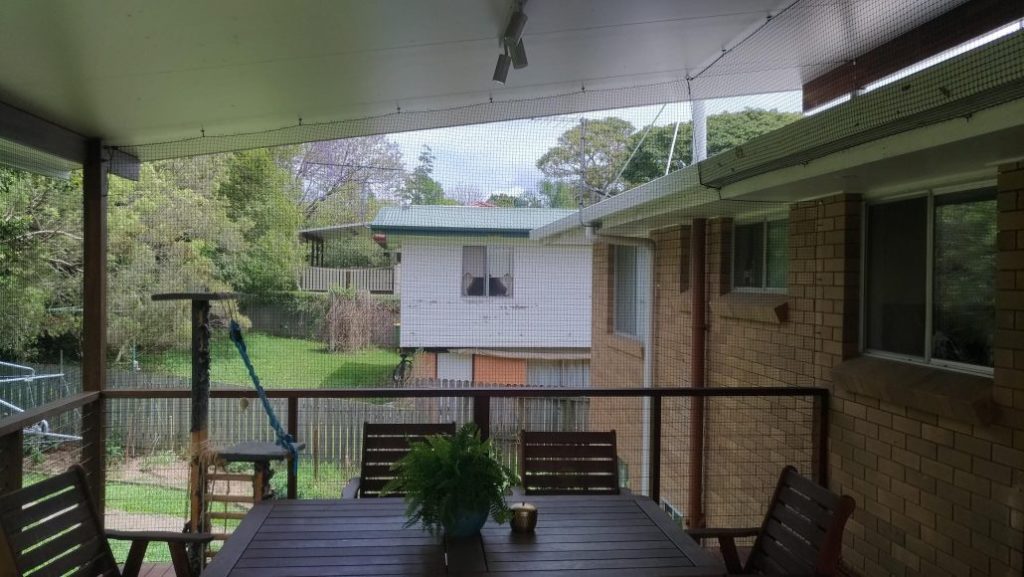
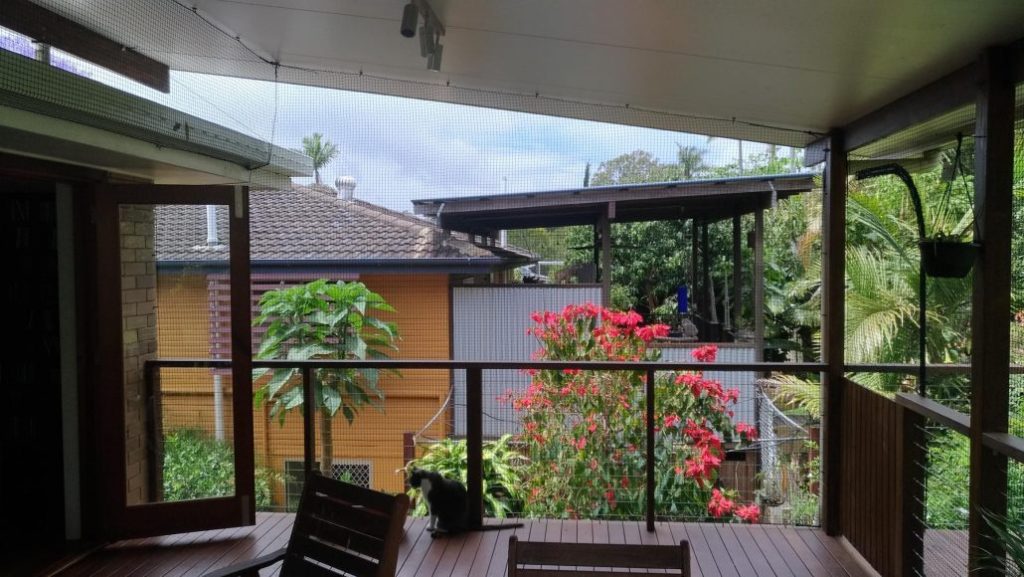
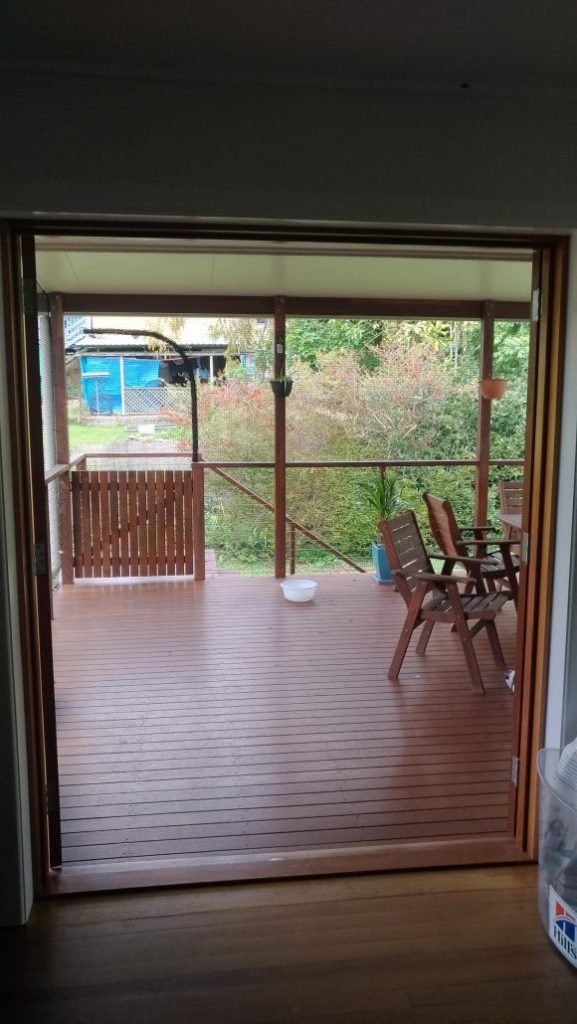
Large / Side of House Cat Enclosures
If you have a lot of room at the side of your house, what better way to utilise it than a really good sized cat enclosure.
This type of enclosure can offer the maximum amount of free space for your cat to enjoy the great outdoors, and you can give him lots of places to play, hide, and rest.
The downside of such a large cat enclosure is the additional cost, but like in the photo above it is possible to run netting to a Colorbond fence or boundary wall. The more you can utilise the boundaries you already have, the cheaper it will be to install.
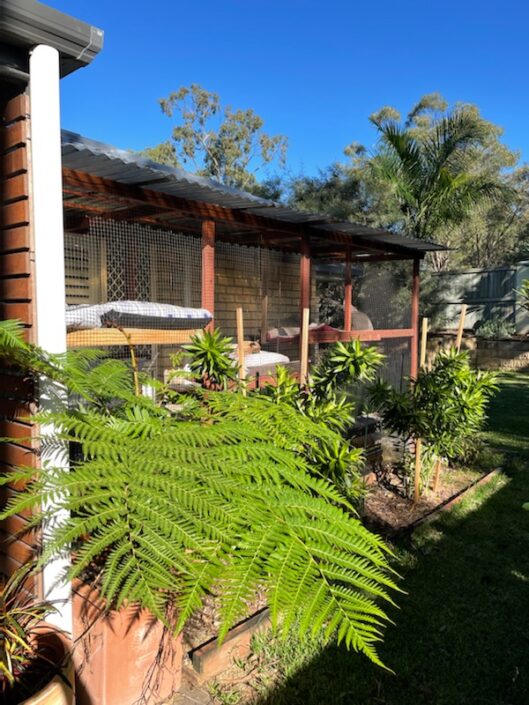
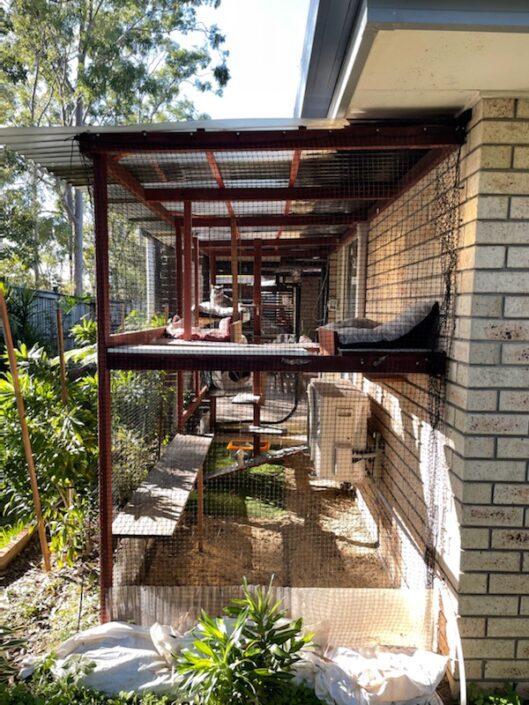
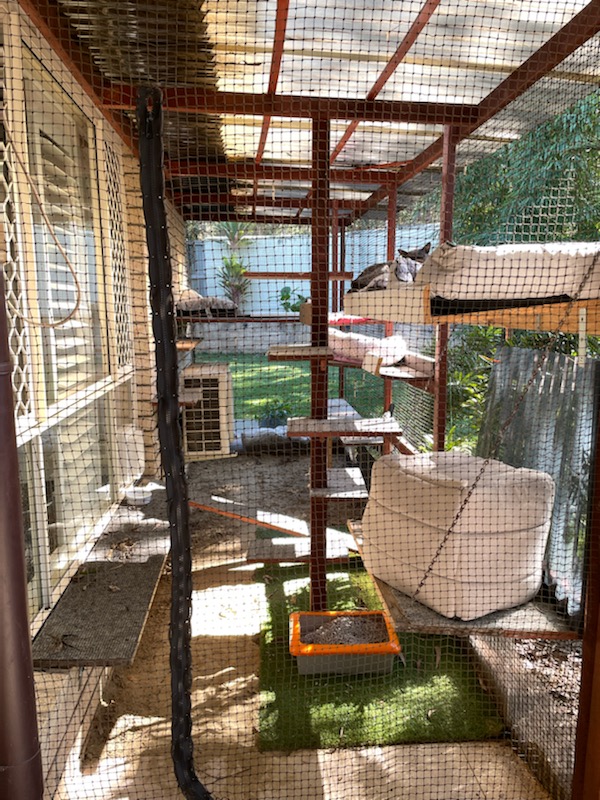
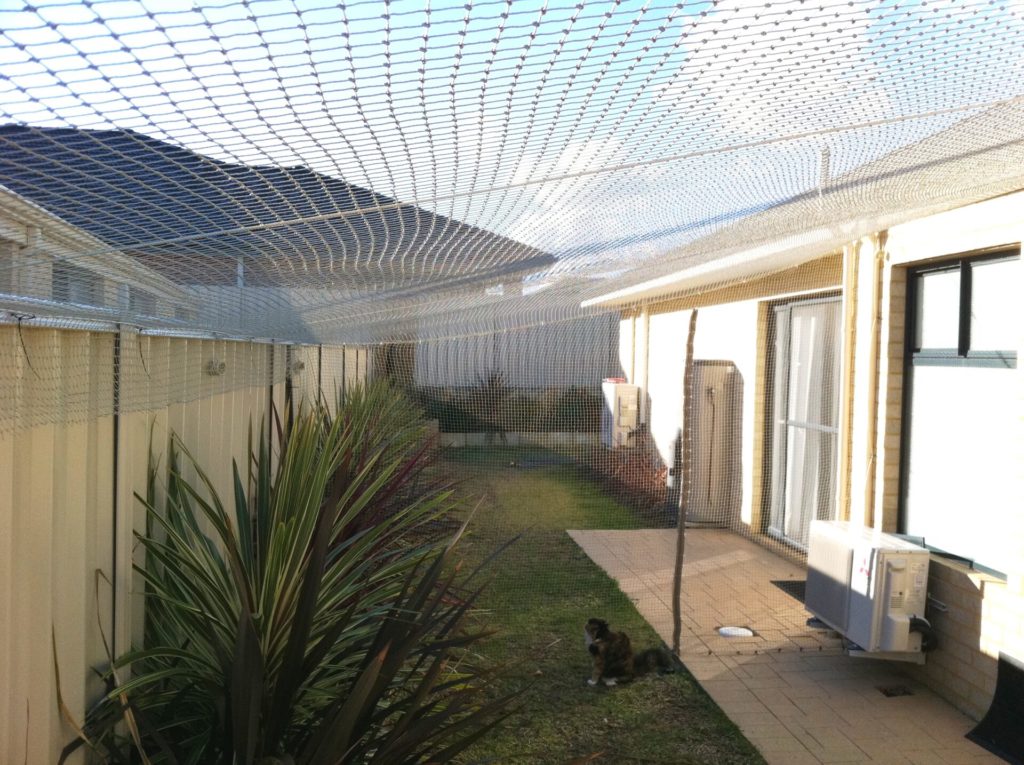
Balcony cat enclosure
Live in an apartment?
Short on outdoor space?
Not to worry, if you have a balcony you might be able to do something like this:
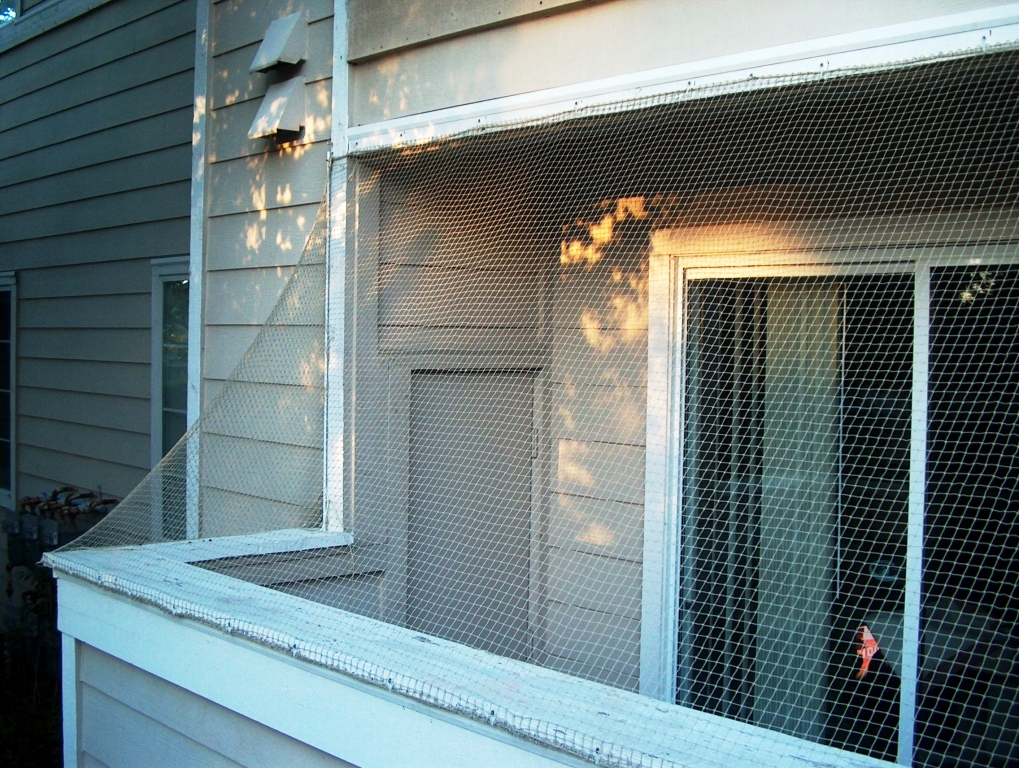
How much do cat enclosures cost?
We contacted three Australian cat enclosure companies, in Brisbane, Perth, and Adelaide, and the average prices were as follows:
- Approximately $500 for a patio cat enclosure.
- Approximately $600 for a side of house cat run enclosure.
Most of the time it’s easy to make a DIY cat enclosure, but a word of advice – don’t skimp on netting.
Make sure the netting you buy is sturdy, resilient, and won’t tear. This is even more important if you buy netting with a zip door, as cheap netting is just a pain to unzip, and won’t last.
How big should a cat enclosure be?
If your cat could talk they would ask for the biggest cat enclosure possible.
Unfortunately we usually have constraints, so have to work with what we have. The main points to consider are:
- How many cats will be in the enclosure?
- What is the activity level of your cat(s)?
- How long do you anticipate your cat(s) to be in the enclosure?
- What is the desired level of comfort you want to give your cat(s)?
And of course:
- What is your budget?
Remember cats love to climb, run, and explore, so providing different levels, hiding spots, scratching posts, and interactive toys within the enclosure can help keep them mentally and physically stimulated.
Minimum size for a cat enclosure
For a single cat, a minimum enclosure size of around 1.2m x 1.8m (4 feet by 6 feet) is often suggested, but larger enclosures are preferable.
The height should be tall enough to allow your cat to stretch up fully without touching the ceiling.
Adding vertical elements, such as shelves, perches, or climbing structures, can also maximize the use of vertical space.
A rule of thumb for multi-cat enclosures
If you have multiple cats, it’s important to provide additional space to accommodate their needs.
A rule of thumb is to add around 0.2 square meters (2 square feet) of space per additional cat. This allows for comfortable movement, individual territories, and minimizes the chances of conflicts or stress.
The other general rule is obviously the bigger the better, to give your cats the most comfort and space to relax away from each other.
The Kmart Wire Storage Cube Cat Enclosure Hack
This is a brilliant solution for making a cat enclosure if you want to go the ghetto DIY route. It turns out the wire storage cubes you can buy in Kmart can work really well.
Granted it’s not the best or most permanent solution, but if you don’t believe me – here’s proof:

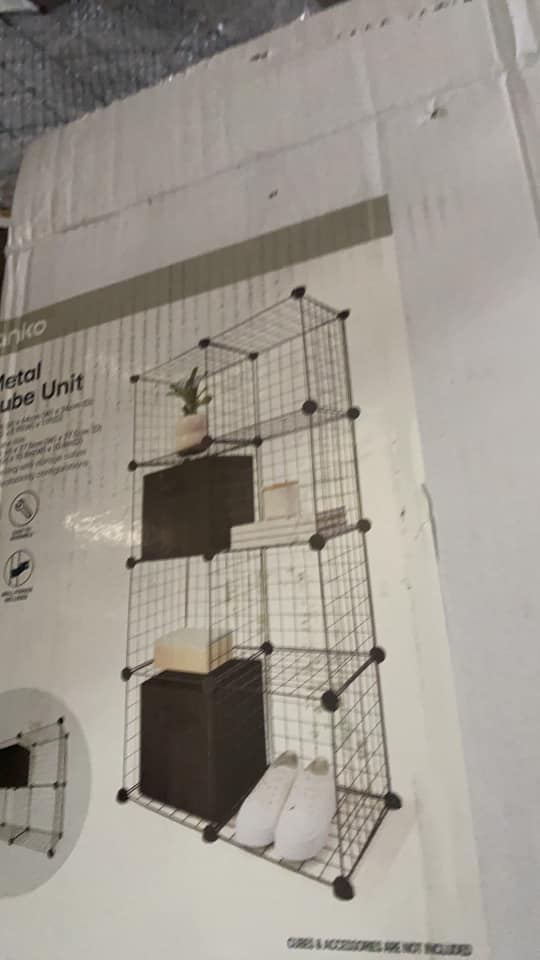
Are cat enclosures cruel?
Cats are adaptable creatures, and if your cat is currently an indoor cat then an outdoor enclosure will really benefit them.
Some would argue it’s cruel to constrain an outdoor cat, and this is understandable for myself as most of my cats have been free to roam. That said, my cat Bernard rarely strays far from the house, and an enclosure merely keeps him safe from harm.
It’s important to consider the benefits to your cat, which can be summarised as:
- Safety – by protecting them from hazards.
- Enrichment and stimulation – if you adequately fit your enclosure out with places to climb, hide, and explore.
- Health and wellbeing benefits – especially if your cat is currently an indoor cat. Vitamin D is important for our cats, too.
- Environmental preservation – in Australia we must consider the local wildlife and ecosystems, and you really don’t want your cat to be a terrorist.
As long as your cat is well looked after, well fed (with raw meaty bones of course), then no, a cat enclosure is not cruel. Most of the time you can consider it beneficial to your cat, their wellbeing, and their health.
Can you use bird netting for a cat enclosure?
Bird netting is easy and cheap to buy, which is why many people consider using it to make a cat enclosure. I’ve actually seen this recommended on a Facebook cat group.
It’s not a good idea.
Bird netting is generally not as durable as netting used for cat enclosures. The reason for this is it doesn’t need to be. Your cat will be far more capable of escaping bird netting than a bird who simply won’t even try to.
Cats love to climb, which gives you a further problem with bird netting. It will tear in no time, and that will leave your cat to roam and wee in the neighbour’s vegetable patch like mine did.
Lastly, bird netting provides little protection from predators. Consider what you’ll likely have on the floor of your cat enclosure – cat food – and then consider whether this would entice other cats, dogs, or wildlife to tear through the lackluster netting.
What about a portable cat enclosure?
There are pros and cons to portable cat enclosures. The biggest con is size, and the biggest pro is obviously portability.
A portable cat enclosure would be right for you if any of the following apply:
- Your cat would benefit from being moved around the garden, such as if you want to avoid direct sunshine at different times of day.
- You need a temporary solution, such as when you’re moving house or staying in an AirBnB (which allows pets). This is actually what I consider the magic of portable cat enclosures, as it means you can take your cat on short trips and still give them outdoors time.
- You want to take your cat camping, but don’t want them to roam. Note: as long as your cat is happy with this.
Please always consider portable cat enclosures as a temporary solution, as keeping your cat confined in such a small space long term is bad for their wellbeing.
Like crate training a dog, it’s also possible to make your cat feel more at home in a portable cat enclosure. Before going on any AirBnB jaunts, for example, let your cat eat and sleep in the enclosure while at home – put the enclosure, if possible, in their favourite comfy spot.
Where can you buy cat enclosures or netting in Australia?
There are a few companies around Australia who will sell cat netting or even come to your home and erect a cat enclosure.
Catnets are the largest company. If you’re in Perth then Cat Runs WA are a good choice.
Amazon is a great place to buy good quality netting, and cat enclosures are easier than you would think to put up.
The benefit of buying netting on Amazon is most types of netting come with thousands of reviews from other cat owners (and I recommend you read them), and the price is really good.
At the time of writing, the Trixie net will set you back 60 bucks for 8m x 3m of netting, and has over 11,000 reviews.

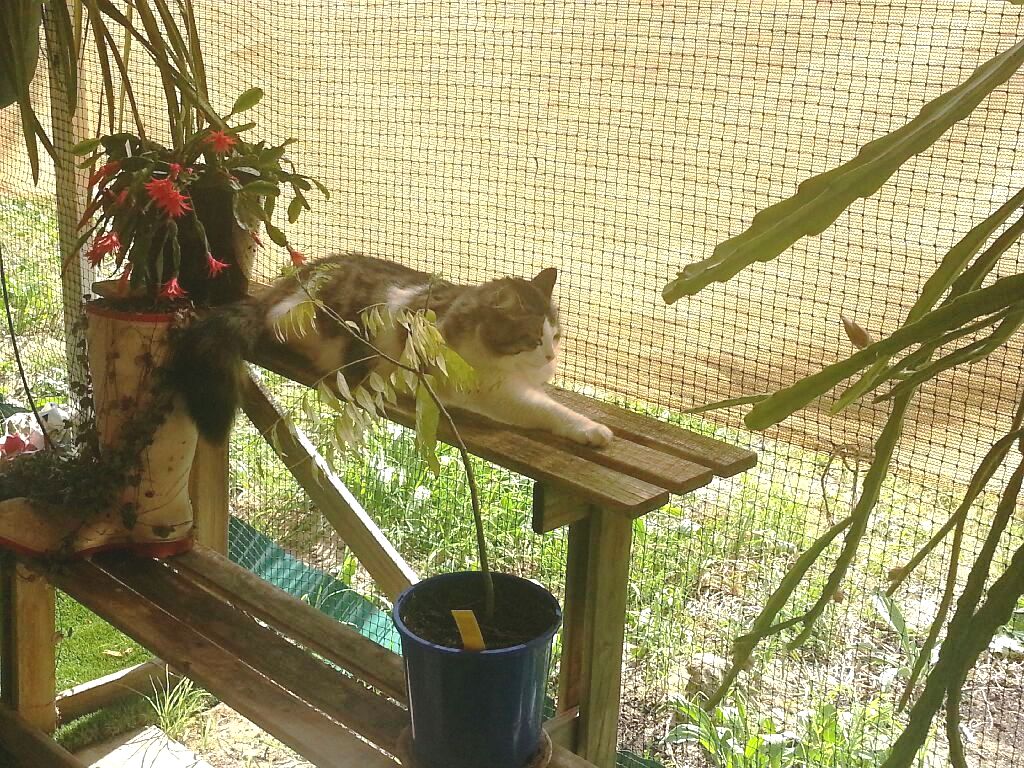

Leave a Reply